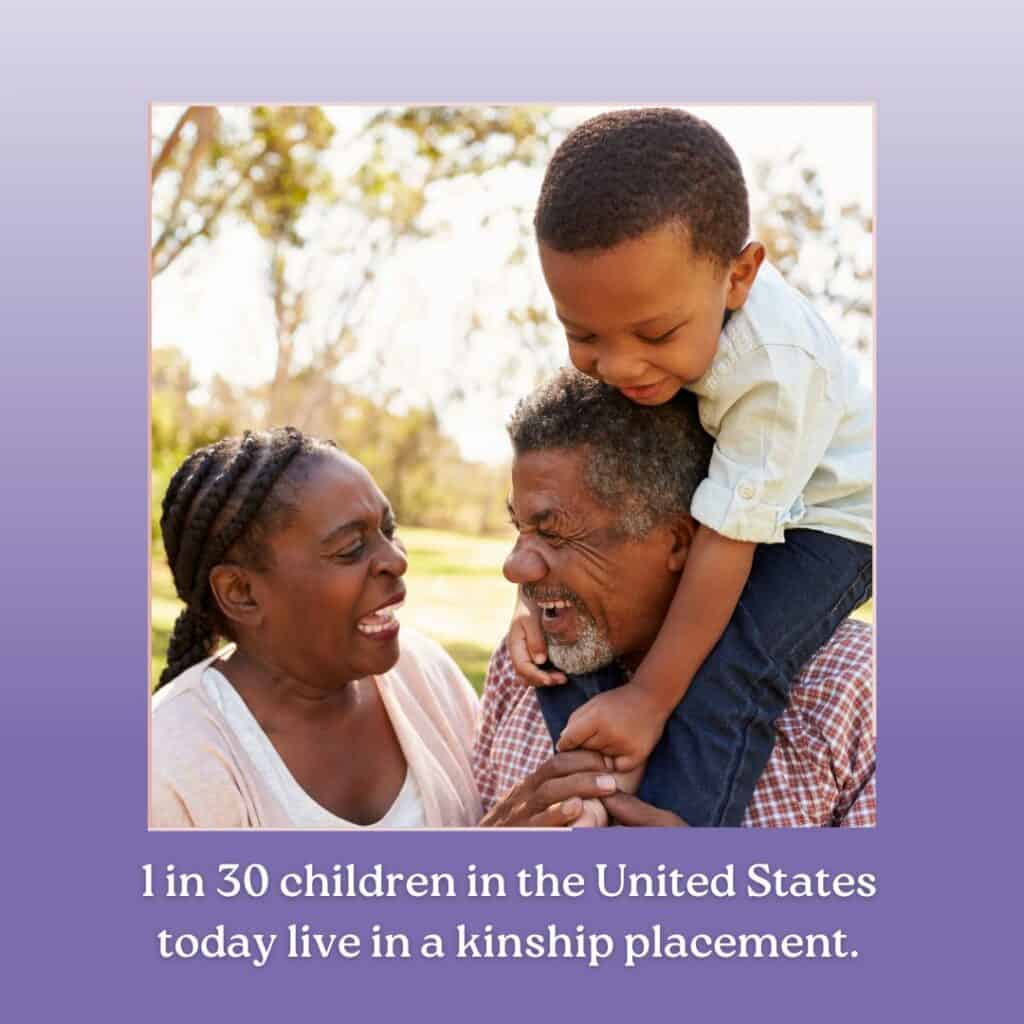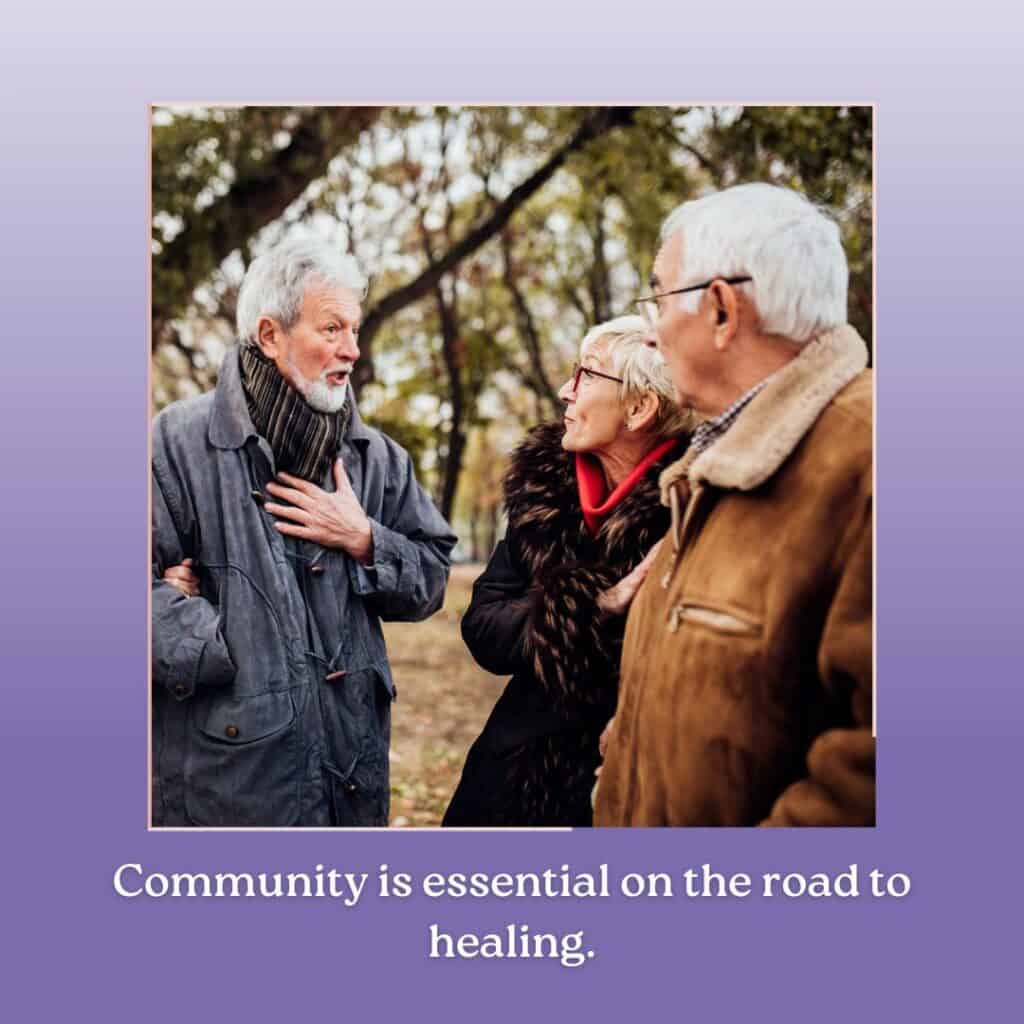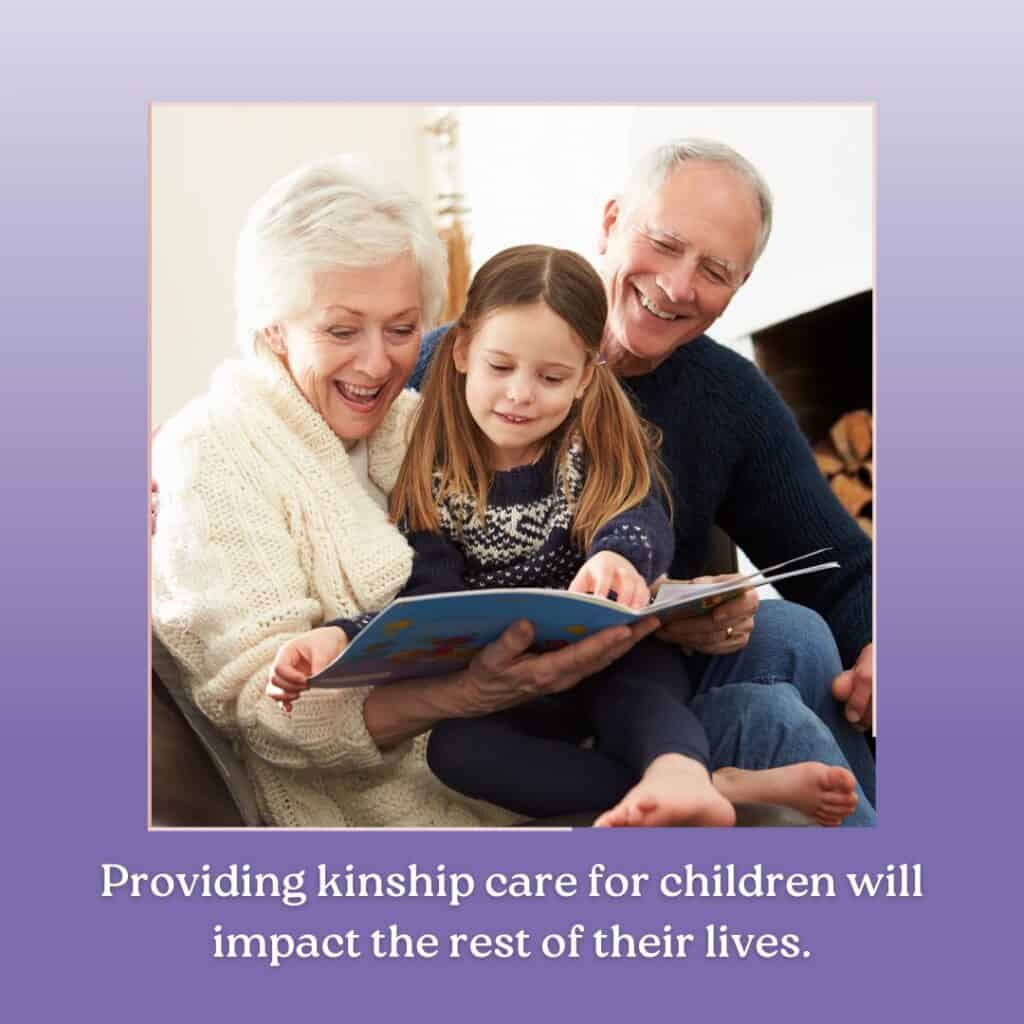You may have wondered before, “What is kinship care?” If you are caring for a relative’s children, you may not have heard the term “kinship placement” before you welcomed them into your home. I once met a grandfather who told me, “I didn’t know anyone else who was raising their grandkids—or that there was a name for it!”
An estimated 1 in 30 children in the United States today live in a kinship placement. That number works out to about one child in every classroom or several children in any neighborhood! You are not alone.
Kinship placement occurs when relatives open their homes to care for children. Grandparents often step into this role, but a kinship placement can be with an aunt, uncle, cousin, adult sibling, or anyone related to the children. Placement can occur for a few weeks, months, or as long as needed—sometimes permanently, through legal guardianship or adoption.

What Leads to Kinship Placement?
Put simply, children need kinship care when their parents are unable to take care of them. In many cases, relatives recognize the needs in their family and make an informal arrangement with the children’s parents. Sometimes, kinship caregivers agree to care for children temporarily and later realize that longer-term care is needed. An informal kinship placement can help to prevent children from entering the foster care system.
In other circumstances, the children’s needs may come to the attention of the county or state social services agency. A social worker determines the children are unsafe in their parents’ care and seeks relatives to care for them. This allows the children to have the stability of living with family members rather than being placed with an unrelated foster family.
Whatever the situation, if you are caring for a relative’s children, you are providing critical help to keep the children safe. You may also feel surprised by the sudden change to your life, saddened by the situation, or completely overwhelmed. All of these feelings are normal! Help is available to you, and it won’t always feel this way.
Helping Children Return Home
You may feel caught in the middle as a kinship care provider. Your life has suddenly been consumed with caring for children; however, you are probably still in a relationship with the relatives who are their parents. These relationships can become complicated, but in many cases, a kinship placement is a short-term solution while the children’s parents resolve the issues that led to the children needing placement with you.
Setting Appropriate Boundaries
Your care for the children can provide the space and time that their parents need to make things right. While you may feel inclined to help the children’s parents with additional support, keep in mind that your first priority is to care for the children. This care may require you to set boundaries and encourage the children’s parents to find the help they need through other people. Community is essential on the road to healing.
For example, one grandmother told me that her son was continuing to receive his children’s state benefits even though she was taking care of the children. She said, “I had to realize that my son (the children’s father) is not a child anymore. I had to care first for his kids, even if it meant I couldn’t cover for his needs.”
When you set appropriate boundaries, not only do you ensure that the children receive the care they need, but you also give their parents an opportunity to meet their needs in healthier and more sustainable ways. Ultimately, setting boundaries can help parents to reunify with their children.
If you’re like many kinship families I’ve known, you may enjoy better family relationships after reunification than before the kinship placement. The children will have forged a special connection to you by living in your home, and your relatives will have received the help they need to care for their children in healthier ways.

What Happens After Kinship Placement?
If your relative’s children are placed with you through a social worker or court order, there will be local requirements that determine the expectations you should have and what’s expected of you. States differ in their laws and practices around kinship care. You can empower yourself to learn more about the process by asking your social worker or representative a few questions.
These questions may include:
- How often can we expect visits or communication from a social worker?
- Are we eligible for financial assistance or other resources to help care for the children?
- Is there a plan for reunification, and when is the next court date?
- Are there any guidelines around the children’s visits with their parents?
If your placement is informal—meaning that the courts are not involved—you may still be eligible for assistance. Contact your local social services agency to ask about your rights as a kinship care provider and any public resources available. You will also need to work with the children’s parents to obtain signed paperwork that allows you to provide care for the children legally, such as for school enrollment and medical care.
The Local Church Can Help
Churches take the words of Scripture to heart, including the call to care for children living outside of parental care. If you don’t already attend a local church, there is certainly one nearby who would love to welcome you and your family. Some local churches have foster care ministries where they may offer resources, support groups, and even childcare to foster families. These churches happily include kinship placements among the families they serve!
Even if a church does not have a formal foster care ministry, they may have benevolence ministries, a prayer ministry, and other ways of coming alongside you.
Many churches across the country host Royal Family KIDS Camp and Mentoring through my organization, For The Children. Through these programs, children between the ages of 6 and 12 attend free summer camp and year-round mentoring with caring, trained adults. Our chapters welcome kinship placements and can refer you to additional resources in your community.

A kinship placement can be full of unknowns, but one thing is for sure: You matter! Your care for your relative’s children through difficult circumstances will impact the rest of their lives. I pray that you will discover help and strength as you continue on the journey of kinship placement.



















